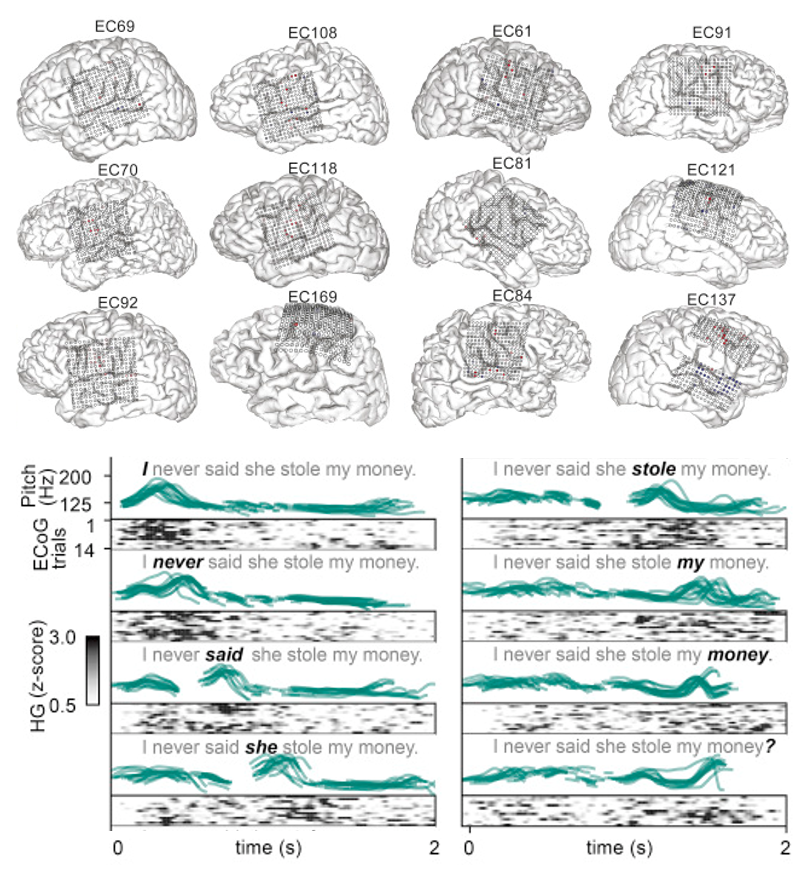Uncovering the Control of Speech and Song
/Figure 1: In this study, the authors found that increases in synchronous neuronal activity in the dorsal lateral motor cortex (dLMC) control pitch by increasing tension of the vocal folds in the larynx.
Have you ever wondered how singers like Adele and Beyonce are able to hit high and low notes with such flexibility and accuracy? Well, this ability to control pitch as we speak or sing is something that humans have but other primates do not. Although monkeys have a similar vocal tract to ours, they simply cannot produce speech. Research suggests that a monkey’s inability to produce speech and control their pitch is due to the fact that they don’t have the same neural circuitry that we have, which could allow us to express ourselves in a more complex manner. Still, it remains unclear exactly where pitch modulation is controlled in the human brain.
Recently, a group of scientists at UCSF decided to step in and answer this very question. They wanted to find out which part of the brain is responsible for the changes in pitch that occur during speech, and if the same neurons are active during singing. They recruited patients with epilepsy to take part in the experiment. When patients have severe epilepsy, doctors must implant electrodes in their brains to monitor them for seizure activity. In addition to helping doctors keep track of seizures, this gives scientists an incredible opportunity to record brain activity in a way that is normally impossible in human subjects—using these arrays, they can record the electrical activity of the brain directly with a resolution on the order of milliseconds and millimeters. Each of the patients recruited for this study had a 256-electrode array implanted over the laryngeal motor cortex, which is known to control speech and song. The researchers asked the subjects to complete certain speaking or singing tasks, and then analyzed the electrical activity recorded from neurons in each subject’s dorsal laryngeal motor cortex (dLMC).
Figure 2: Each of the subjects recruited for this study had an electrode array (cross-hatching) implanted over their laryngeal motor cortex, the part of the brain thought to control speech and song. Participants were asked to repeat a sentence, emphasizing a different word each time (bold). The green lines show how the pitch contour of the sentence changes with different word emphasis. The black dots represent the activity of neurons recorded from the arrays.
First, the scientists found that neurons in the dLMC showed activity that was positively correlated with increases in pitch. They asked the study participants to repeat the sentence “I never said she stole my money,” several times, and to place emphasis on a different word each time they said the sentence. They also asked participants to sings the notes do-mi-sol on an “ah” vowel. During singing and speaking, the scientists found that synchronous activity of dLMC neurons increased as the pitch of the speaker’s voice increased.
The scientists then went one step further and electrically stimulated the brains of the epilepsy patients throughout the sensorimotor cortex, which contains the dLMC. When they stimulated the dLMC, the laryngeal muscles, which are responsible for modulating pitch, were engaged. To top it all off, the scientists found that when they stimulated the dLMC in 20 of the 80 patients they could actually make these patients vocalize. This helped to establish a causal relationship between the activity of the dLMC and the control of the laryngeal muscles.
All in all, the scientists at UCSF did a great job of establishing where pitch is modulated in the brain. While this study only looked at native English speakers, future research can investigate the dLMC’s role in other languages, like Mandarin, where pitch is used differently. This research provides a hint that the dLMC may hold the key to what allows humans to flexibly and voluntarily control pitch, while other primates cannot.
Edited by Isabel Low
References
Dichter, B. K., Breshears, J. D., Leonard, M. K., & Chang, E. F. (2018). The control of vocal pitch in human laryngeal motor cortex. Cell, 174(1), 21-31.


